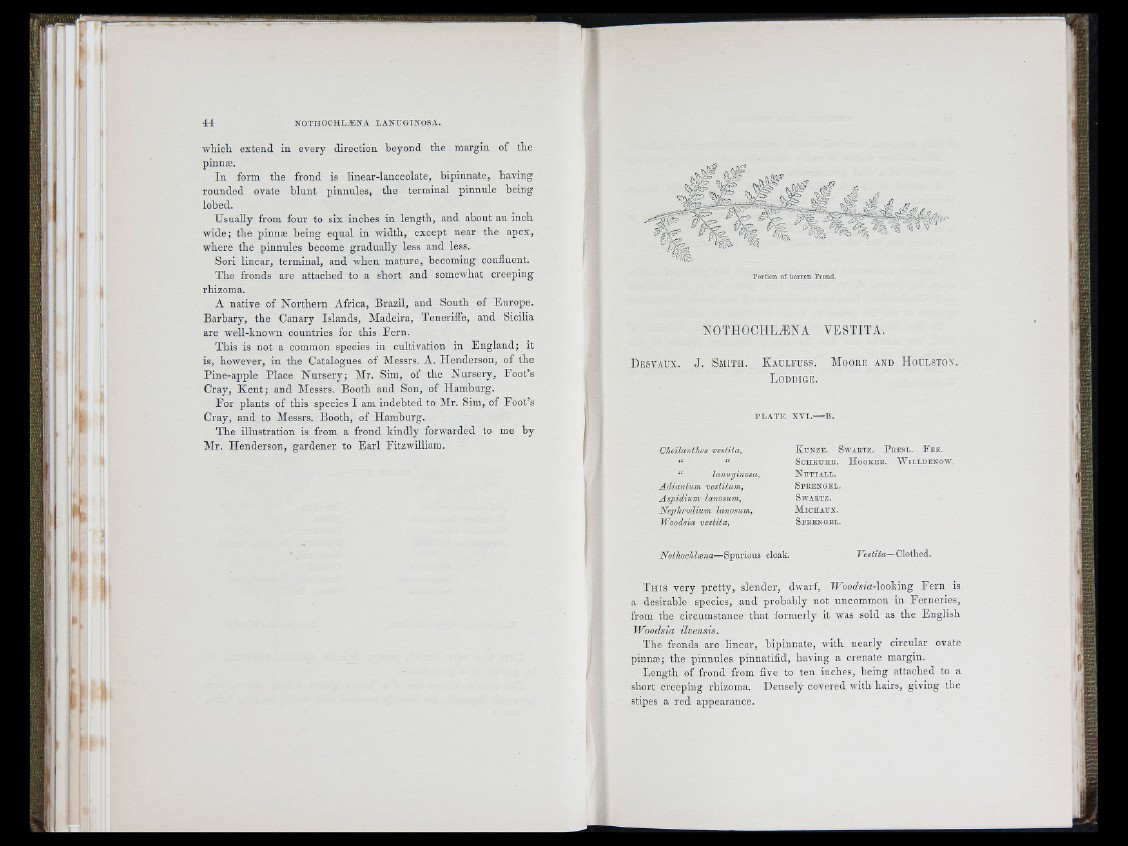
I
U :
which extend in every direction beyond th e margin of the
pinnse.
I n form th e frond is linear-lanceolate, hipinnate, having
ro u n d ed ovate b lu n t pinnules, the terminal p innule being
lobed.
Usually from four to six inches in len g th , and about an inch
wide; the pinnse being equal in width, except near the apex,
where the pinnules become g radually less and less.
Sori linear, termina l, and when mature, becoming confluent.
T he fronds are attached to a short and somewhat creeping
rhizoma.
A native of N o rth e rn Africa, Brazil, and South of E uro p e .
Ba rh a ry , th e Canary Islands, Madeira, Teneriffe, and Sicilia
are well-known countries for this Fern.
T his is not a common species in cultivation in E n g la n d ; it
is, however, in the Catalogues of Messrs. A. H en derson, of the
P in e -ap p le P lace N u rs e ry ; Mr. Sim, of the N u rse ry , F o o t’s
Cray, K e n t; and Messrs. Booth and Son, of Hamburg.
F o r plants of this species I am indebted to Mr. Sim, of F o o t’s
C ray, and to Messrs. Booth, of Hamburg.
T h e illustration is from a frond k in d ly forwarded to me by
Mr. H en derson, gardener to E a rl Fitzwilliam.
Portion of barren Frond.
NOTHOCHLzENA VESTITA.
D e s v a u x . J. S m i t h . K a u l f u s s . M o o r e a n d H o u l s t o x .
L o d d ig e .
P L A T E X V I . B.
Cheilanthes vestita,
“ lanuginosa,
Ad ia n tu n i vestitum,
Asp id ium lanosum,
Nephrodium lanosum,
Woodsia vestita,
K u n z e . S w a r t z . P r e s l . F e e .
S c h k u h r . H o o k e r . W i l l d e n o w .
N u t t a l l .
S p r e n g e l .
S^^'^ARTZ.
M i c h a u s .
S p r e n g e l .
Nothochlcena—Spurious cloak. Clothed.
I s ;
T h i s very p re tty , slender, dwarf, TUoodsia-looking F e rn is
a desirable species, and p robably not uncommon in Ferneries,
from the circumstance th a t formerly it was sold as the English
Woodsia ihensis.
The fronds are lin e a r, hip in n a te , with nearly circular ovate
pinnm; the pinnules pinnatifid, having a crenate margin.
L ength of frond from five to ten inches, being attached to a
short creeping rhizoma. Densely covered with hairs, giving the
stipes a red appearance.